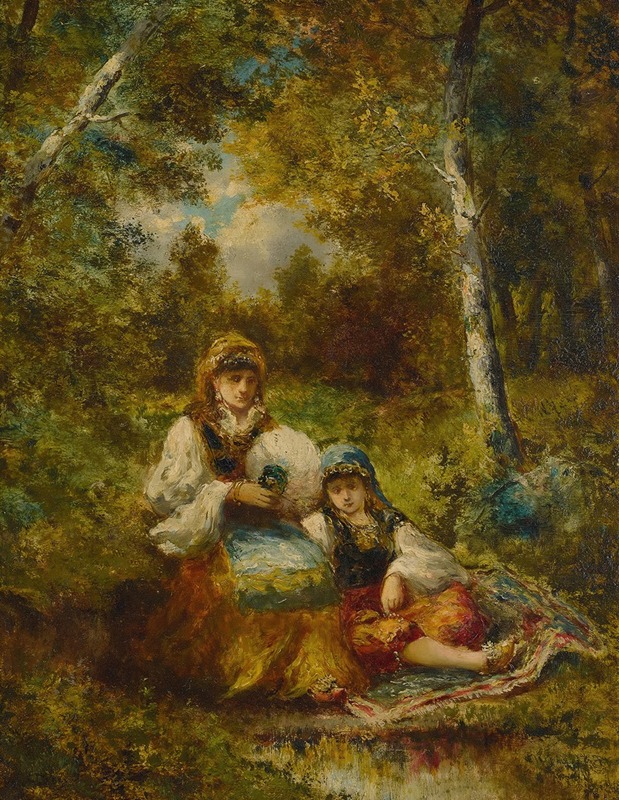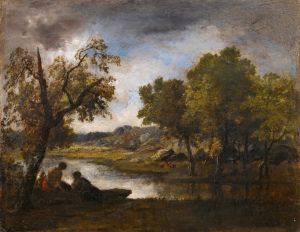
Repos de bohémiennes en forêt
A hand-painted replica of Narcisse-Virgile Diaz de La Peña’s masterpiece Repos de bohémiennes en forêt, meticulously crafted by professional artists to capture the true essence of the original. Each piece is created with museum-quality canvas and rare mineral pigments, carefully painted by experienced artists with delicate brushstrokes and rich, layered colors to perfectly recreate the texture of the original artwork. Unlike machine-printed reproductions, this hand-painted version brings the painting to life, infused with the artist’s emotions and skill in every stroke. Whether for personal collection or home decoration, it instantly elevates the artistic atmosphere of any space.
"Repos de bohémiennes en forêt" (Resting Gypsies in the Forest) is an oil painting created by the French artist Narcisse-Virgile Diaz de la Peña in 1863. Diaz de la Peña was a prominent figure in the Barbizon School, a group of painters who were part of the Realist movement in mid-19th century France. This school was known for its focus on natural landscapes and rural scenes, often painted en plein air (outdoors).
The painting depicts a group of Romani people, often referred to as "bohémiennes" in French, resting in a forest setting. The scene is characterized by its lush, detailed depiction of the natural environment, which is a hallmark of Diaz de la Peña's work. The forest is rendered with a rich palette of greens and browns, capturing the dappled light filtering through the trees. The figures are shown in various poses of relaxation, suggesting a moment of respite during their travels.
Diaz de la Peña's treatment of the Romani people in this painting reflects a Romantic fascination with the exotic and the marginalized. During the 19th century, Romani people were often romanticized in European art and literature, depicted as free-spirited and living in harmony with nature, though this portrayal was frequently at odds with the harsh realities they faced. In "Repos de bohémiennes en forêt," the artist presents the Romani figures with a sense of dignity and tranquility, integrating them harmoniously into the natural landscape.
The composition of the painting is carefully balanced, with the figures arranged in a way that draws the viewer's eye into the depth of the forest. Diaz de la Peña's brushwork is both detailed and expressive, capturing the textures of the foliage and the play of light and shadow. The use of color is particularly notable, with warm tones used to highlight the figures against the cooler greens and browns of the forest.
"Repos de bohémiennes en forêt" is an example of Diaz de la Peña's skill in combining figure painting with landscape, a combination that was relatively rare among his contemporaries in the Barbizon School, who often focused solely on landscapes. This painting, like many of his works, demonstrates his ability to convey the beauty and serenity of the natural world while also providing a glimpse into the lives of people who lived on its margins.
The painting is held in the collection of the Musée d'Orsay in Paris, which houses one of the most extensive collections of 19th-century art in the world. The museum's collection includes many works by members of the Barbizon School, providing context for Diaz de la Peña's contributions to this important artistic movement.
In summary, "Repos de bohémiennes en forêt" is a significant work by Narcisse-Virgile Diaz de la Peña, showcasing his talent for landscape painting and his sympathetic portrayal of Romani people. The painting remains an important piece within the broader context of 19th-century French art and continues to be appreciated for its artistic and historical value.


















